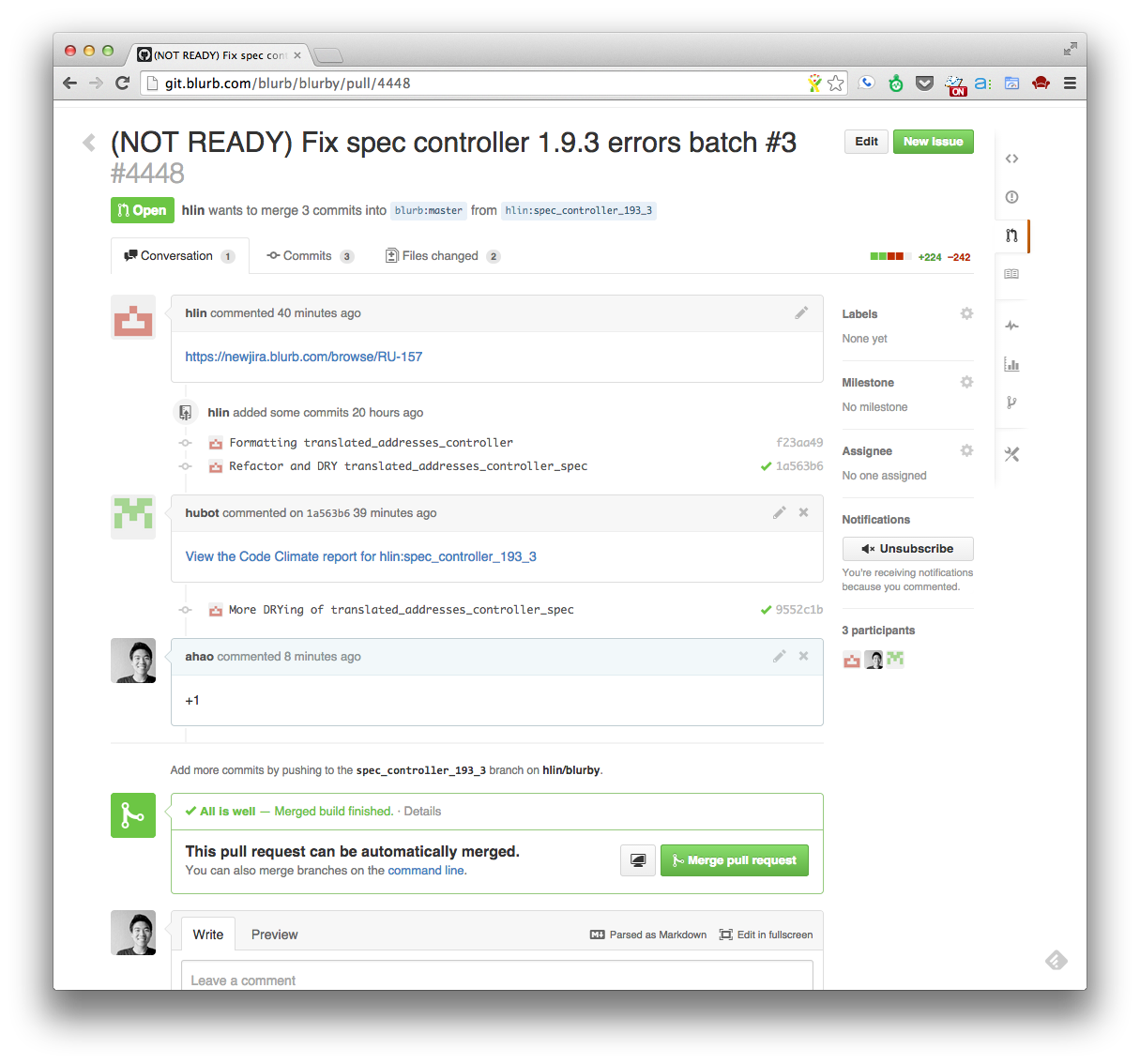A quick glimpse into developer life at Blurb:
I get into the office around 9AM and check email (and make my daily coffee – can't miss it). Great. I usually spend some time cleaning up correspondence between some product owners and our tech leads discussing new ideas around new product X or feature Y. A quick scan of New Relic and Airbrake reveal that the site's humming along well.
I log into Slack, our central communication hub, and quickly get a dump of the conversations by our teammates in the morning and last night. Surprisingly, something as simple as a central chatroom has helped break down some communication walls in our teams. Furthermore, having a continual log of team conversations have helped our remote workers keep abreast of continual updates.
Agile @ Blurb
I log into JIRA and scan the board to check our team status. Looks like we still have a lot of in-progress stories. I'm currently not assigned anything.
At our daily standup, Chris, a senior engineer on my team, is working on story Z. I decide I'm going to ask Chris how he's doing and see if I can help.
Chris tells me that he needs some help writing a few tests for his feature, so I pull up a chair and we jump right into it – he implements the feature, I write the tests. Time passes. We finish our work and we push our branch up to the Github server for some code review.
Code reviews
Code review on our team is done via the pull request system – we ping our teammates on Slack and ask for a code review. The comments begin flowing in, and we respond.
Simulataneously, we're looking at Code Climate to give us feedback on how our code fared against its static analysis tools. Hmm, we seem to have bumped code complexity a bit in this class, so let's sit down and refactor some more. We push a change and we ask folks in our chatroom to help give comments once more.

(Lunch rolls around. We grab some coworkers to stretch our legs and go to lunch at Senor Sisig, which is probably the best food truck in the world.)
Our team works on a 2-"+1" code review system. When we make code changes, we need at least two other people on the team to approve our code. It sounded a little daunting at first, but it's been a good way to make sure that the right conversations are happening around the code.
Robots make life better.
Our hubot sits in the chatroom and tries to be a little helpful. Here, hubot chimes in and lets us know that two people have given their approvals.

Continous integration @ Blurb
We merge the pull request and wait for Jenkins to run the unit test build. We keep a big ol' build light on a bunch of build monitors in our work area. If you break the build, the big red light will radiate waves of Shame upon you until you fix the build.

Once the build passes, it automatically deploys the app to an internal staging environment – the whole process happens within 15 minutes.
Sheree, a test engineer on our team, has already run ahead of us and written some RSpec integration tests prior to our implementation. Chris has already sat down with Sheree prior to beginning the story and defined some of the stories and use cases, BDD-style. We work together to get the integration tests running and working.
All in a day's work.
A big reason I enjoy working here is because our daily development workflow encourages teamwork and collaboration, and you can get feedback on your changes very quickly. And we're making it better! Stay tuned as we continue to write more about our engineering practices.
Andrew is an Engineering Manager on the Web Team. He has long ago acknowledged the superiority of Senor Sisig burritos and looks forward to them all week.